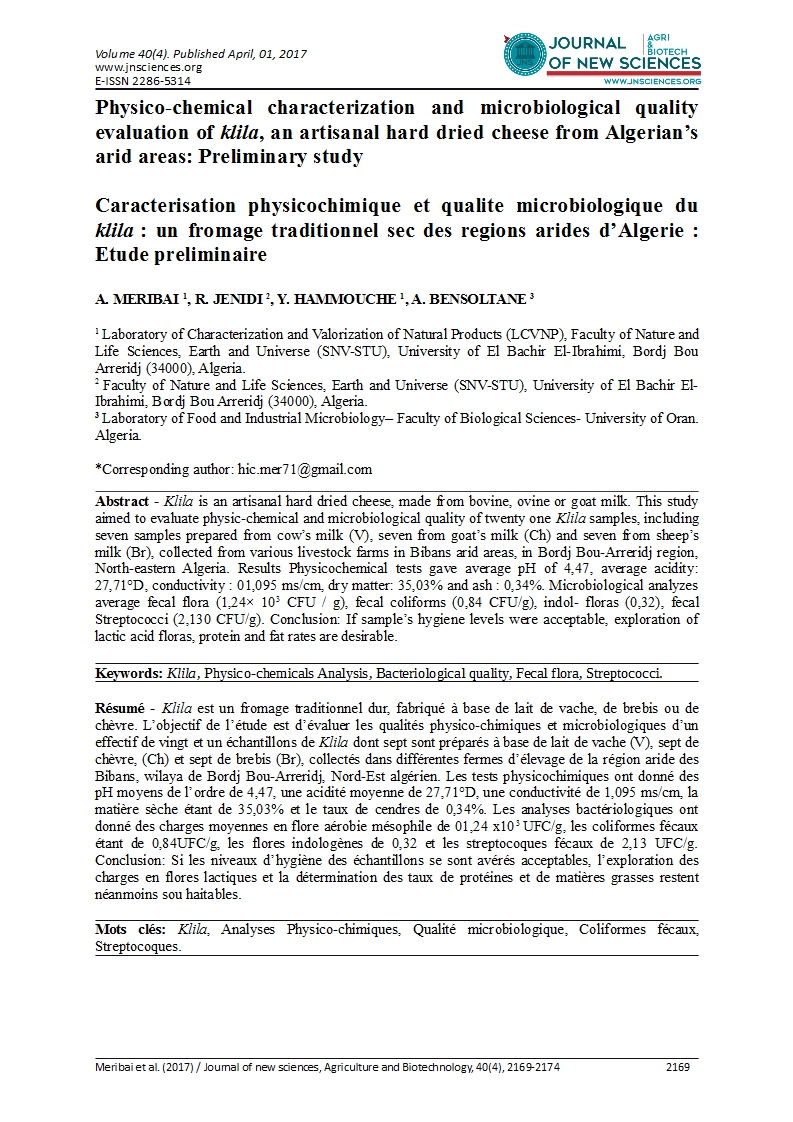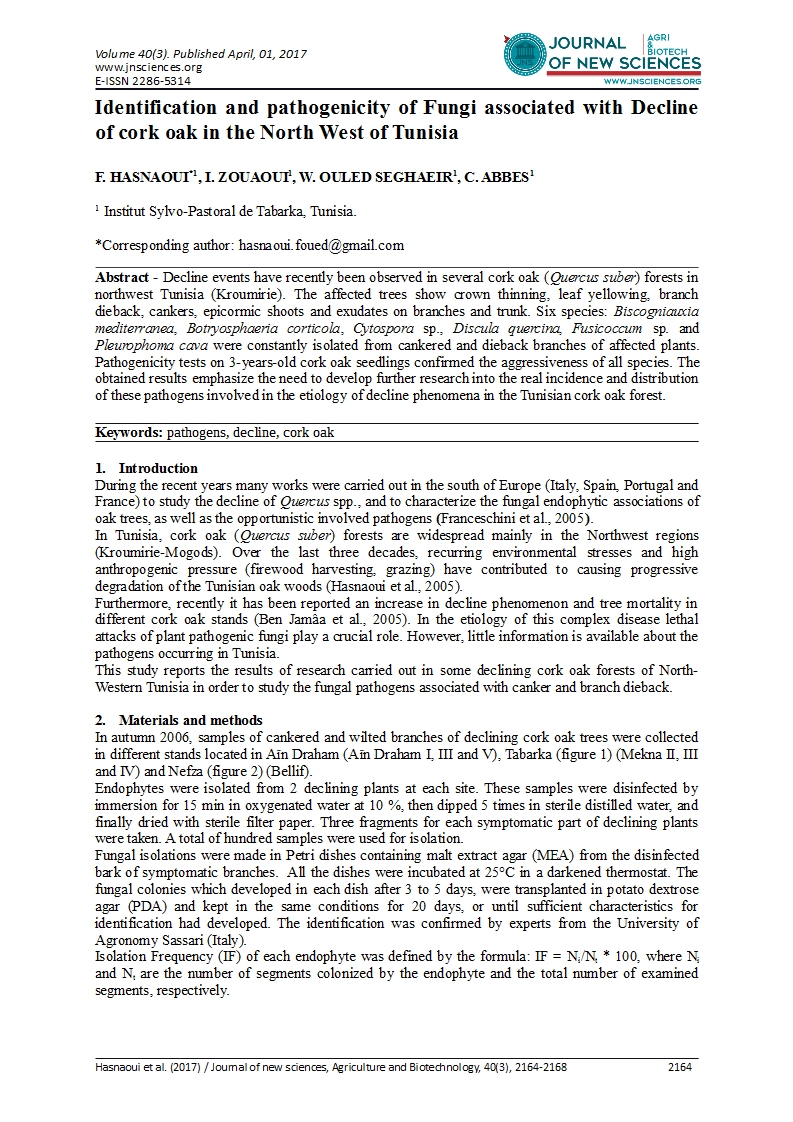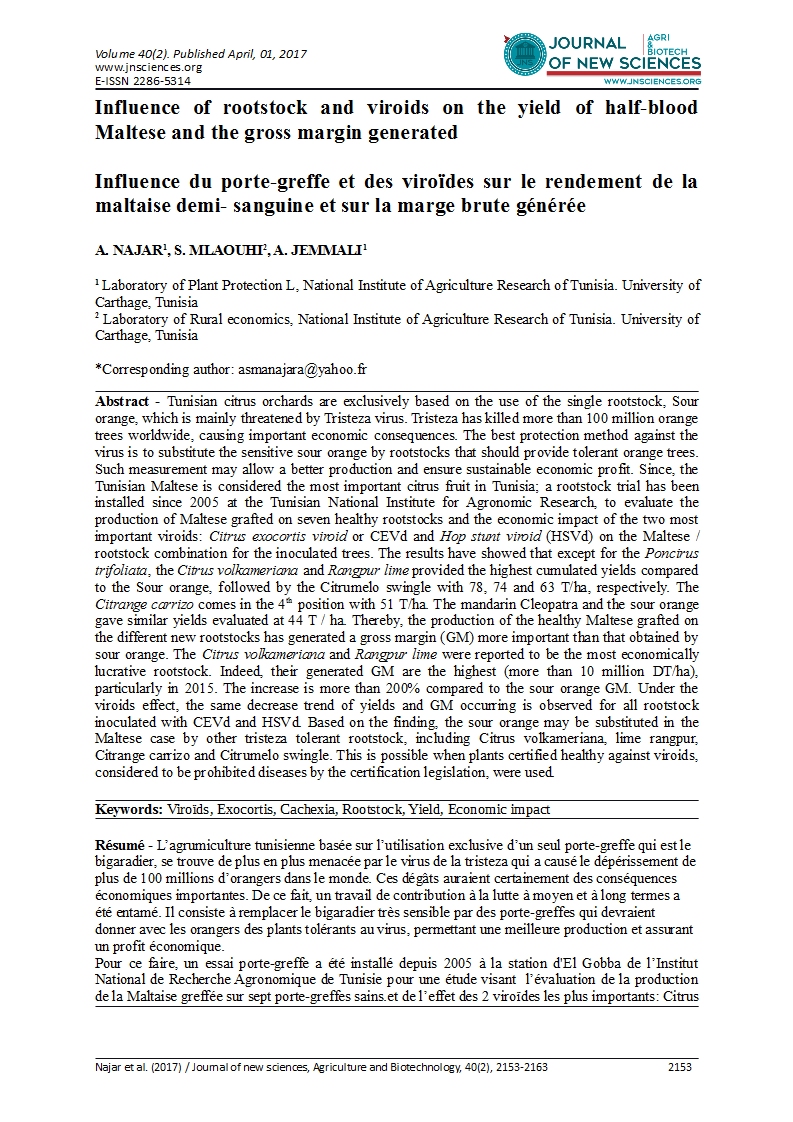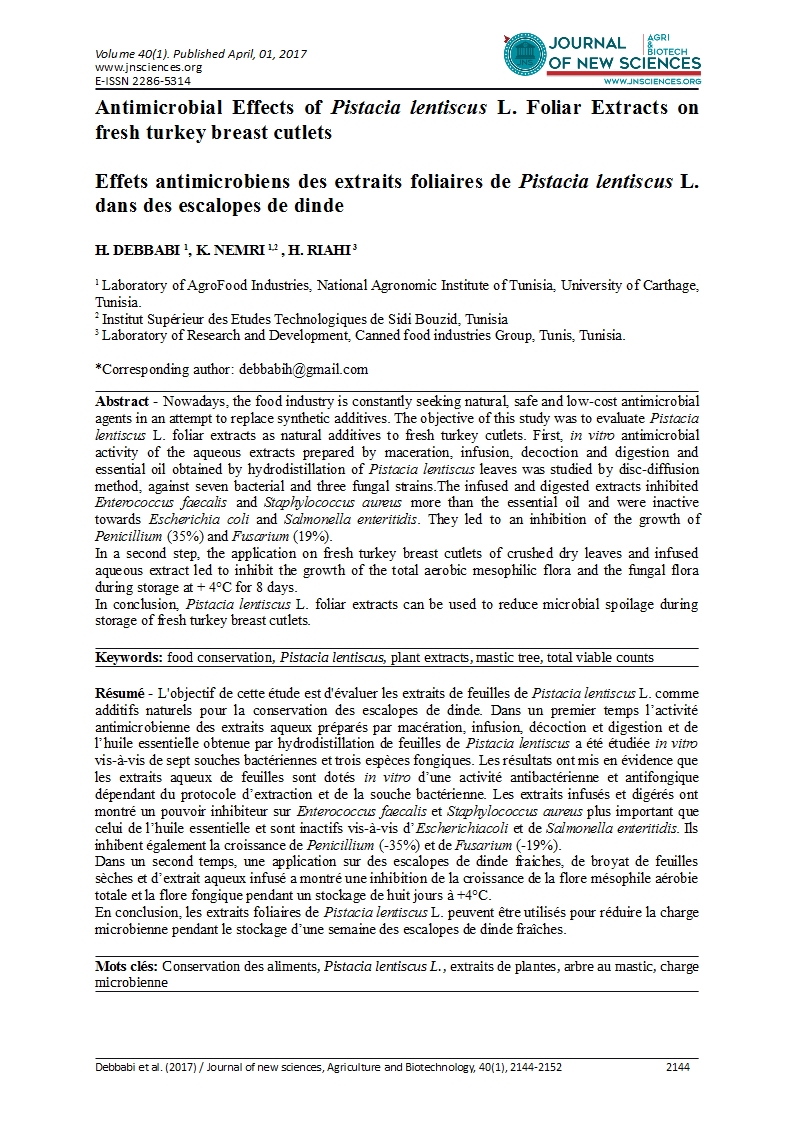- Category: Volume 40
- Hits: 7287
Molecular characterization and genetic relationships of cultivated Tunisian olive varieties (Olea europaea L.) using SSR markers
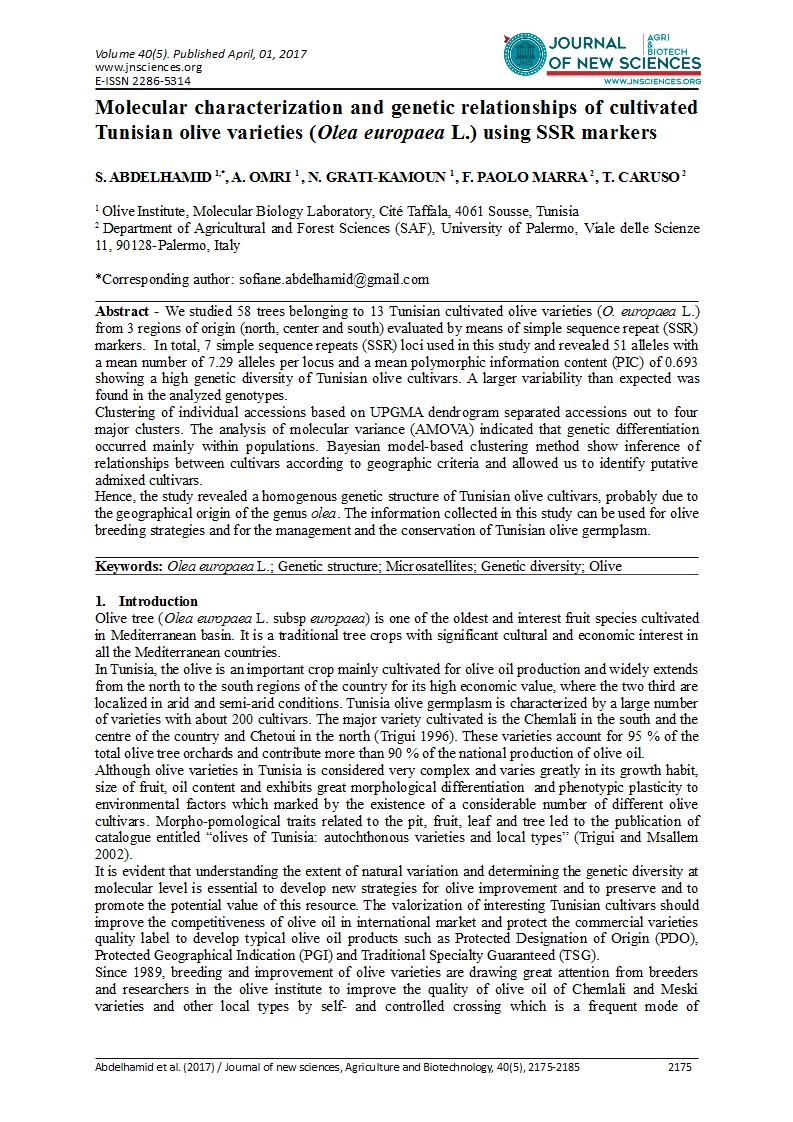
S. ABDELHAMID 1,*
A. OMRI 1
N. GRATI-KAMOUN 1
F. Paolo MARRA 2
T. CARUSO 2
1 Olive Institute, Molecular Biology Laboratory, Cité Taffala, 4061 Sousse, Tunisia
2 Department of Agricultural and Forest Sciences (SAF), University of Palermo, Viale delle Scienze 11, 90128-Palermo, Italy
Abstract - We studied 58 trees belonging to 13 Tunisian cultivated olive varieties (O. europaea L.) from 3 regions of origin (north, center and south) evaluated by means of simple sequence repeat (SSR) markers. In total, 7 simple sequence repeats (SSR) loci used in this study and revealed 51 alleles with a mean number of 7.29 alleles per locus and a mean polymorphic information content (PIC) of 0.693 showing a high genetic diversity of Tunisian olive cultivars. A larger variability than expected was found in the analyzed genotypes. Clustering of individual accessions based on UPGMA dendrogram separated accessions out to four major clusters. The analysis of molecular variance (AMOVA) indicated that genetic differentiation occurred mainly within populations. Bayesian model-based clustering method show inference of relationships between cultivars according to geographic criteria and allowed us to identify putative admixed cultivars. Hence, the study revealed a homogenous genetic structure of Tunisian olive cultivars, probably due to the geographical origin of the genus olea. The information collected in this study can be used for olive breeding strategies and for the management and the conservation of Tunisian olive germplasm.
Keywords: Olea europaea L.; Genetic structure; Microsatellites; Genetic diversity; Olive

